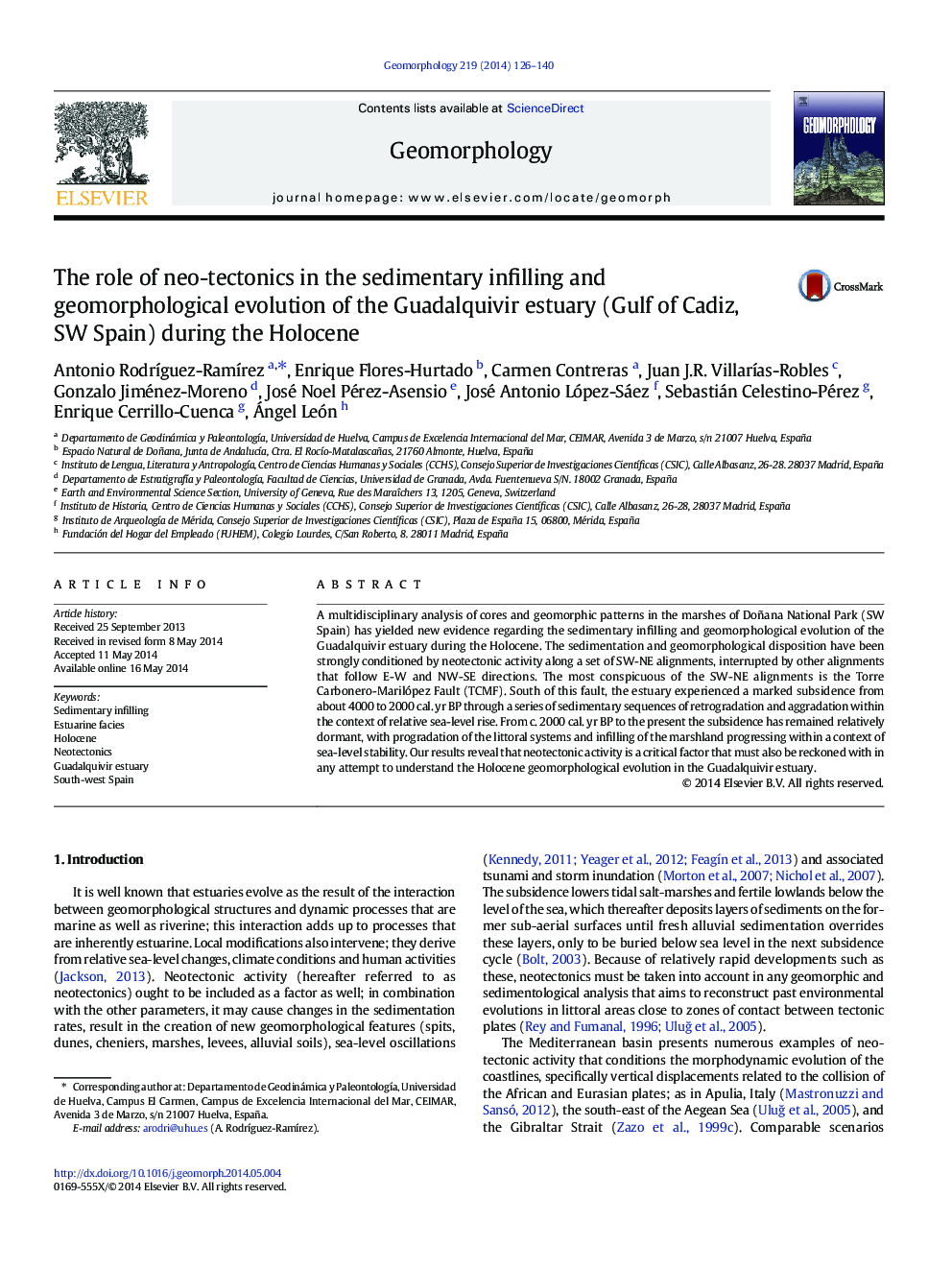| Article ID | Journal | Published Year | Pages | File Type |
|---|---|---|---|---|
| 6432455 | Geomorphology | 2014 | 15 Pages |
â¢New data are provided for the Holocene sedimentary infilling.â¢New data are provided for the Holocene geomorphic evolution.â¢Neo-tectonic activity strongly conditions Holocene sedimentation.â¢The geomorphology and the stratigraphic sequence of the basin are defined.
A multidisciplinary analysis of cores and geomorphic patterns in the marshes of Doñana National Park (SW Spain) has yielded new evidence regarding the sedimentary infilling and geomorphological evolution of the Guadalquivir estuary during the Holocene. The sedimentation and geomorphological disposition have been strongly conditioned by neotectonic activity along a set of SW-NE alignments, interrupted by other alignments that follow E-W and NW-SE directions. The most conspicuous of the SW-NE alignments is the Torre Carbonero-Marilópez Fault (TCMF). South of this fault, the estuary experienced a marked subsidence from about 4000 to 2000Â cal. yr BP through a series of sedimentary sequences of retrogradation and aggradation within the context of relative sea-level rise. From c. 2000Â cal. yr BP to the present the subsidence has remained relatively dormant, with progradation of the littoral systems and infilling of the marshland progressing within a context of sea-level stability. Our results reveal that neotectonic activity is a critical factor that must also be reckoned with in any attempt to understand the Holocene geomorphological evolution in the Guadalquivir estuary.
Graphical abstractDownload full-size image
